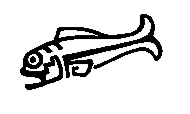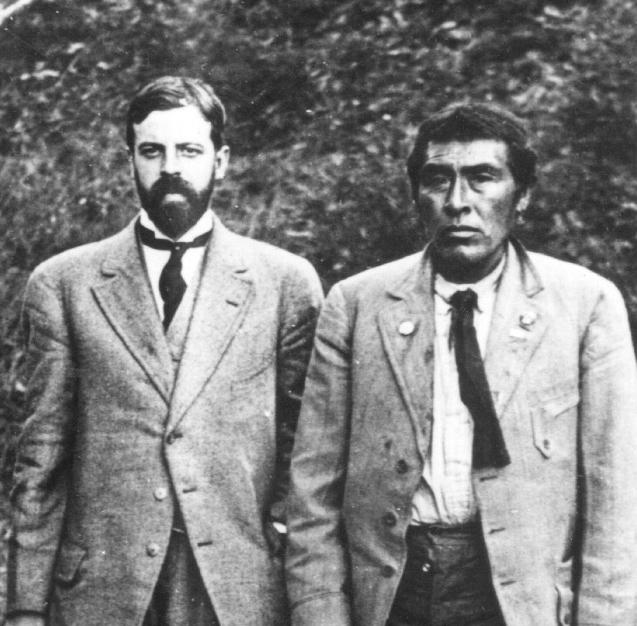
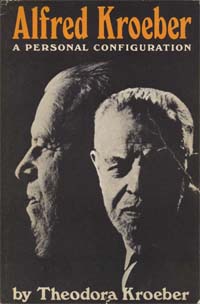
左:35歳のクローバーと、右:イシ(推計 50歳; ca.1861-1916)1911年撮影(ウィキコモンズ)
★アルフレッド・ルイス・クローバー(Alfred Louis Kroeber、1876年6月11日 - 1960年10月5日)は、アメリカの文化人類学者。1901年、コロンビア大学でフランツ・ボースに師事し、コロンビア大学で初めて人類学の博士号を取 得した。カリフォルニア大学バークレー校人類学部の初代教授となり、1909年から1947年まで同大学の人類学博物館長を務めた。小説家、詩人、 短編作家として知られるアーシュラ・K・ル・グィンの父親である。
★アルフレッド・ルイ ス・クローバー(ウィキペディア 日本語):「アルフレッド・ルイス・クローバー(Alfred Louis Kroeber、1876年6月11日 - 1960年10月5日)は、アメリカ合衆国の文化人類学者。20世紀前半の学界人中、最もその影響力の大きかった人物のひとり。ニュージャージー州ホー ボーケンのドイツ系」プロテスタントのフランスの時計輸入業者の家庭(母、ユダヤ系Johanna Muller; 父、 10歳時に米国に移民したFlorence Kroeber)に生まれる。 「1901年コロンビア大学で、フランツ・ボアズの指導のもとで、自分が生まれ 育ったアラパホー地方でのフィールドワークに関する論文で学位を取得。その学 者としてのキャリアの大半をカリフォルニア州で過ごし、その殆どがカリフォルニア大学バークレー校に於いてであった。カリフォルニア大学の人類学部の本館 は、彼にちなんでクローバーホールとして知られている。 一般には文化人類学者として知られているが、考古学においても重要な業績を挙げており、また考古学と文化の関連付けを行う上での人類学への貢献も大きい。 ニューメキシコ、メキシコ、ペルーで何度か発掘活動の指揮を取ったこともある。 クローバーと彼の弟子たちは、アメリカ合衆国の西海岸におけるネイティブ・アメリカンの諸部族の文化的データを収集し、それを一冊の報告に纏め上げてい る。これは、Handbook of Indians of California (1925)として刊行されている。こうした既に消え去った部族の情報を保存しようとする試みは、今日では "Salvage ethnography" の名で呼ばれるようになった。文化地域や文化的配置といった概念を考え出し、広めたことでも知られている (Cultural and Natural Areas of Native North America, 1939年)。 影響力は、非常な大きなものがあり、多くの同時代人はあごひげと口ひげを蓄えた彼の風貌を、ほとんど社会科学者とはかくあるものと看做したほどである。ク ローバーとローランド・ディクソン(Roland Burrage Dixon, 1875-1934)は、北米でのネイティヴ・アメリカンの言語の発生的な分類においても大きな影響を及ぼしている。ペヌーティ語族とホカ大 語族のような分類には彼等の所説が考慮されている。 ヤヒ族の生き残りイシと一緒に仕事をしたことでも有名。イシは、カリフォルニアの部族ヤヒ族の最後の生き残りと言われているが、その信憑性には異論がない わけではない。彼の二番目の妻シオドーラ・クローバーは、よく知られているイシの伝記『イシ 二つの世界に生きたインディアンの物語』(岩波書店)を書いている。 彼の手による教科書『文化人類学』(Anthropology、1923年、1948年)は、長く」利用された。「2度目の妻のシオドーラ・クロー バーとの間に学者カール・クローバーと作家アーシュラ・K・ル=グウィンという子供をもうけている。シオドーラとの最初の結婚によって生まれた二人の子ど もも認知しており、テッドと歴史家のクリフトン・クローバーである。クリフトンとカールは、最近(2003年)、一緒にイシのケースについて一冊の本、 Ishi in Three Centuries. を纏め上げた。これは、イシについて、アメリカインディアンの手になるエッセイも収録した初めての学術書となるものである」
| Alfred Louis Kroeber
(June 11, 1876 – October 5, 1960) was an American cultural
anthropologist. He received his PhD under Franz Boas at Columbia
University in 1901, the first doctorate in anthropology awarded by
Columbia. He was also the first professor appointed to the Department
of Anthropology at the University of California, Berkeley.[3] He played
an integral role in the early days of its Museum of Anthropology, where
he served as director from 1909 through 1947.[4] Kroeber provided
detailed information about Ishi, the last surviving member of the Yahi
people, whom he studied over a period of years. He was the father of
the acclaimed novelist, poet, and writer of short stories Ursula K. Le
Guin. |
アルフレッド・ルイス・クローバー(Alfred Louis
Kroeber、1876年6月11日 -
1960年10月5日)は、アメリカの文化人類学者。1901年、コロンビア大学でフランツ・ボースに師事し、コロンビア大学で初めて人類学の博士号を取
得した。カリフォルニア大学バークレー校人類学部の初代教授となり、1909年から1947年まで同大学の人類学博物館長を務めた[4]。小説家、詩人、
短編作家として知られるアーシュラ・K・ル・グィンの父親である。 |
| Life Kroeber was born in Hoboken, New Jersey, to parents of German Protestant origin. His mother Johanna Muller was an American of German descent; his father Florence Kroeber came to the United States from Germany at the age of ten, with his parents and family, and became an importer of French clocks. The family belonged to a German-American milieu that was upper middle-class, classical and rationalistic, schooled in the German intellectual tradition, and of mixed Jewish and Protestant ancestry.[5][6] Alfred's family moved into New York City when Alfred was quite young, and he was tutored and attended private schools there. He had three younger siblings and all had scholarly interests. The family was bilingual, speaking German at home, and Kroeber also began to study Latin and Greek in school, beginning a lifelong interest in languages.[1] He attended Columbia College at the age of 16, joining the Philolexian Society and earning an BA in English in 1896 and an MA in Romantic drama in 1897. Changing fields to the new one of anthropology, he received his PhD under Franz Boas at Columbia University in 1901, basing his 28-page dissertation on decorative symbolism on his field work among the Arapaho. It was the first doctorate in anthropology awarded by Columbia. Kroeber spent most of his career in California, primarily at the University of California, Berkeley. He was both a Professor of Anthropology and the Director of what was then the University of California Museum of Anthropology (now the Phoebe A. Hearst Museum of Anthropology). The anthropology department's headquarters building at the University of California was named Kroeber Hall in his honor, before being un-named January 26, 2021 in order to "help Berkeley recognize a challenging part of our history, while better supporting the diversity of today’s academic community."[7] He was associated with Berkeley until his retirement in 1946. He died in Paris on October 5, 1960. |
生涯 クローバーは、ニュージャージー州ホーボーケンで、ドイツ系プロテスタントの両親のもとに生まれた。母親のヨハンナ・ミュラーはドイツ系のアメリカ人で、 父親のフローレンス・クローバーは10歳のときに両親と家族とともにドイツからアメリカに渡り、フランス時計の輸入商となった。一家は上流中産階級のドイ ツ系アメリカ人の環境に属し、ドイツの知的伝統の教育を受け、ユダヤ教徒とプロテスタントの混血であった[5][6]。 アルフレッドの家族はアルフレッドがかなり幼い頃にニューヨークに移り住み、彼はそこで家庭教師を受け、私立学校に通っていた。3人の弟妹がおり、全員が 学問に関心を持っていた。一家はバイリンガルで、家庭ではドイツ語を話していたが、クローバーも学校でラテン語とギリシャ語を学び始め、生涯にわたって言 語に興味を持ち続けた[1]。 16歳でコロンビア大学に入学し、フィロキシー協会に入り、1896年に英語の学士号、1897年にロマン派演劇の修士号を取得した。1901年、コロン ビア大学でフランツ・ボースに師事し、アラパホ族でのフィールドワークをもとに装飾的象徴体系に関する28ページの論文で博士号を取得した。これはコロン ビア大学で授与された人類学初の博士号であった。 その後、カリフォルニア大学バークレー校を中心に、カリフォルニアで活躍した。人類学の教授であると同時に、当時のカリフォルニア大学人類学博物館(現在 のフィービー・A・ハースト人類学博物館)の館長でもあった。カリフォルニア大学の人類学本部の建物は彼の名誉のためにクローバー・ホールと名付けられた が、2021年1月26日に「バークレーが我々の歴史の難しい部分を認識し、今日の学術界の多様性をより良くサポートする」ために名前が変更された [7]。1960年10月5日、パリで死去。 |
| Personal life Kroeber married Henriette Rothschild in 1906. She contracted tuberculosis and died in 1913, after several years of illness.[1] In 1926 he married again, to Theodora Kracaw Brown, a widow who had been a student in one of his graduate seminars.[1] They had two children: Karl Kroeber, a literary critic, and the science fiction writer Ursula Kroeber Le Guin. In addition, Alfred adopted Theodora's sons by her first marriage, Ted and Clifton Brown, who both took his surname. In 2003, Clifton and Karl Kroeber published a book of essays on Ishi's story, which they co-edited, called, Ishi in Three Centuries.[8] This is the first scholarly book on Ishi to contain essays by Native American writers and academics. After her husband's death, Theodora Kroeber wrote a biography of him, titled Alfred Kroeber: A Personal Configuration. It was published by the University of California Press in 1970. David G. Mandelbaum, a cultural anthropologist and former colleague of Alfred,[9] stated that this biography was just as important a work from an anthropologist's perspective as Ishi in Two Worlds.[10] |
私生活 1906年にヘンリエット・ロートシルトと結婚。彼女は結核にかかり、数年の闘病生活の後、1913年に死去した[1]。 1926年、大学院のゼミの学生だった未亡人のセオドラ・クラコウ・ブラウンと再婚した[1]。 2人の子供をもうけた。文芸評論家のカール・クローバーとSF作家のアーシュラ・クローバー・ルグィンである[1]。また、アルフレッドはセオドラの最初 の結婚による息子、テッドとクリフトン・ブラウンを養子に迎え、二人とも自分の姓を名乗るようになった。 2003年、クリフトンとカール・クローバーが共同編集したイシの物語に関するエッセイ集『Ishi in Three Centuries』を出版した[8]。これはイシに関する学術書としては初めて、ネイティブアメリカンの作家や学者によるエッセイが収録されている。 夫の死後、セオドラ・クローバーは『アルフレッド・クローバー』と題する夫の伝記を執筆した。A Personal Configuration』(個人的な構成)というタイトルの伝記を書きました。1970年にカリフォルニア大学出版局から出版された。アルフレッドの 元同僚で文化人類学者のデヴィッド・G・マンデルバウムは、この伝記は人類学者の視点から見れば『二つの世界の石』と同じくらい重要な仕事であると述べて いる[9]。 |
| Influence Although he is known primarily as a cultural anthropologist, he did significant work in archaeology and anthropological linguistics, and he contributed to anthropology by making connections between archaeology and culture. He conducted excavations in New Mexico, Mexico, and Peru. In Peru he helped found the Institute for Andean Studies (IAS) with the Peruvian anthropologist Julio C. Tello and other major scholars. Kroeber and his students did important work collecting cultural data on western tribes of Native Americans. The work done in preserving information about California tribes appeared in Handbook of the Indians of California (1925). In that book, Kroeber first described a pattern in California groups where a social unit was smaller and less hierarchically organized than a tribe,[11][12] which was elaborated upon in The Patwin and their Neighbors[13] in which Kroeber first coined the term "tribelet" to describe this level of organization. Kroeber is credited with developing the concepts of culture area, cultural configuration (Cultural and Natural Areas of Native North America, 1939), and cultural fatigue (Anthropology, 1963). Kroeber influenced many of his contemporaries in his views as a cultural historian. During his lifetime, he was known as the "Dean of American Anthropologists". Kroeber and Roland B. Dixon were very influential in the genetic classification of Native American languages in North America, being responsible for theoretical groupings such as Penutian and Hokan, based on common languages. He is noted for working with Ishi, who was claimed to be the last California Yahi Indian. (Ishi may have been of mixed ethnic heritage, with a father from the Wintu, Maidu or Nomlaki tribes.)[14] His second wife, Theodora Kracaw Kroeber, wrote a well-known biography of Ishi, Ishi in Two Worlds. Kroeber's relationship with Ishi was the subject of a film, The Last of His Tribe (1992), starring Jon Voight as Kroeber and Graham Greene as Ishi.[15][16] Kroeber's textbook, Anthropology (1923, 1948), was widely used for many years. In the late 1940s, it was one of ten books required as reading for all students during their first year at Columbia University. His book, Configurations of Cultural Growth (1944), had a lasting impact on social scientific research on genius and greatness; Kroeber believed that genius arose out of culture at particular times, rather than holding to "the great man" theory.[17] Kroeber's childhood friend Carl Alsberg described him as a "good listener" and able "to be objective, to see the other point of view, to penetrate behind another person’s behavior to his underlying thought [...] These traits indicate a sincerity and simplicity of character that primitive peoples sense at once and to which they respond by giving their confidence."[18] From 1920 to 1923 Kroeber conducted an active practice as a lay psychoanalyst, with an office in San Francisco.[18] |
影響 文化人類学者として知られているが、考古学や人類学的言語学の分野でも重要な仕事をし、考古学と文化を結びつけ人類学に貢献した。ニューメキシコ州、メキ シコ、ペルーで発掘調査を行った。ペルーでは、ペルーの人類学者フリオ・C・テーロやその他の主要な学者とともにアンデス研究所(IAS)の設立に貢献し た。 クローバーと彼の学生たちは、アメリカ西部のネイティブ・アメリカンの部族の文化データを収集する重要な仕事をした。カリフォルニアの部族に関する情報を 保存するために行った作業は、『Handbook of the Indians of California』(1925年)に掲載された。この本の中で、クローバーは、社会的単位が部族よりも小さく、階層的に組織されていないカリフォルニ アの集団のパターンを初めて説明し[11][12]、『The Patwin and their Neighbors』[13]でさらに詳しく説明し、クローバーがこの組織レベルを表すために「tribelet」という用語を初めて作り出しました。文 化圏、文化的構成(Cultural and Natural Areas of Native North America, 1939)、文化的疲労(Anthropology, 1963)の概念を発展させたのはクローバーであるとされる。 文化史家としての彼の見解は、同時代の多くの人々に影響を与えた。生前は「アメリカ人類学者の学長」と呼ばれた。クローバーとローランド・B・ディクソン は、北米先住民の言語の遺伝子分類に大きな影響を与え、共通言語に基づくペヌティアンとホカンといった理論的なグループ分けの責任者であった。 彼は、最後のカリフォルニア・ヤヒ・インディアンであると主張するイシと仕事をしたことで知られている。(イシはウィントゥ族、マイドゥ族、ノムラキ族の いずれかを父に持つ混血であった可能性がある)[14] 2番目の妻セオドラ・クラコウ・クローバーはイシの有名な伝記『イシ in Two Worlds』を書いた。クローバーとイシの関係は、ジョン・ヴォイトがクロエバー役を、グレアム・グリーンがイシ役を演じた映画『The Last of His Tribe』(1992年)の題材になった[15][16]。 クローバーの教科書『人類学』(1923年、1948年)は長年にわたって広く使われていた。1940年代後半には、コロンビア大学の初年度に全学生が読 むことを義務付けられた10冊のうちの1冊であった。彼の著書、Configurations of Cultural Growth(1944年)は、天才と偉人に関する社会科学的研究に永続的な影響を与えた。クローバーは「偉人」説に固執するのではなく、天才は特定の時 代の文化から発生したと考えていた[17]。 クローバーの幼馴染であるカール・アルスバーグは彼を「聞き上手」であり、「客観的になり、相手の視点を見、他人の行動の背後にあるその根本的な思考まで 突き通すことができる[...]これらの特徴は、原始人がすぐに感じ、それに対して彼らが信頼を与えることによって応える誠実で単純な性格を示す」 [18]と表現しています。 1920年から1923年まで、クローバーはサンフランシスコにオフィスを構え、信徒の精神分析医として活発な診療を行った[18]。 |
| Indian land claims Kroeber served early on as the plaintiffs' director of research in Indians of California v. the United States, a land claim case.[19] Omer Stewart of the University of Colorado served as associate director. Ralph Beals of the University of California, Los Angeles, served as director of research for the federal government in the case. Both men were former students of Kroeber.[20] Kroeber's impact on the Indian Claims Commission may well have established the way expert witnesses presented testimony before the tribunal.[21] Several of his former students also served as expert witnesses; for instance, Stewart directed the plaintiff research for the Ute and for the Shoshone peoples.[22] |
インディアンの土地請求権 コロラド大学のオマー・スチュワートが副所長を務めていた。カリフォルニア大学ロサンゼルス校のラルフ・ビールズは、この訴訟で連邦政府側の調査部長を務 めていた。クローバーの教え子であった二人は、インディアン請求権委員会における専門家証人の証言の仕方を確立させたといえる[21]。 また、スチュワートはユート族とショショーニ族の原告調査を担当するなど、彼の教え子の何人かは専門家証人として活躍している[22]。 |
| Partial list of works Indian Myths of South Central California (1907), in University of California Publications in American Archaeology and Ethnology 4:167–250. Berkeley. The Religion of the Indians of California (1907), in University of California Publications in American Archaeology and Ethnology 4:6. Kroeber, Alfred Louis; Waterman, Thomas Talbot; Sapir, Edward; Sparkman, Philip Stedman (January–March 1908). "Notes on California folk-lore". Journal of American Folklore. 21 (80): 35–42. doi:10.2307/534527. hdl:2027/uc1.31822005860226. JSTOR 534527. Handbook of the Indians of California (1925), Washington, D.C: Bureau of American Ethnology Bulletin No. 78 "Native American Population" (1934) in American Anthropologist, Vol. 36, No. 1. The Nature of Culture (1952). University of Chicago. with Clyde Kluckhohn: Culture. A Critical Review of Concepts and Definitions (1952). Cambridge. Style and Civilizations Westport Conn.: Greenwood, 1957. Anthropology: Culture Patterns & Processes (1963). New York: Harcourt, Brace & World (earlier editions in 1923 and 1948). |
|
| https://en.wikipedia.org/wiki/Alfred_Kroeber |
★学問的影響 Alfred Louis Kroeber, 1876-1960.
|
1) Although he is known primarily as a cultural anthropologist, he did significant work in archaeology and anthropological linguistics, and he contributed to anthropology by making connections between archaeology and culture. He conducted excavations in New Mexico, Mexico, and Peru. In Peru he helped found the Institute for Andean Studies (IAS) with the Peruvian anthropologist Julio C. Tello and other major scholars. 2) Kroeber and his students did important work collecting cultural data on western tribes of Native Americans. The work done in preserving information about California tribes appeared in Handbook of the Indians of California (1925). In that book, Kroeber first described a pattern in California groups where a social unit was smaller and less hierarchically organized than a tribe,[8][9] which was elaborated upon in The Patwin and their Neighbors[10] in which Kroeber first coined the term "tribelet" to describe this level of organization. Kroeber is credited with developing the concepts of culture area, cultural configuration (Cultural and Natural Areas of Native North America, 1939), and cultural fatigue (Anthropology, 1963). 3) Kroeber's influence was so strong that many contemporaries adopted his style of beard and mustache as well as his views as a cultural historian.[11] During his lifetime, he was known as the "Dean of American Anthropologists". Kroeber and Roland B. Dixon were very influential in the genetic classification of Native American languages in North America, being responsible for theoretical groupings such as Penutian and Hokan, based on common languages. 4) He is noted for working with Ishi, who was claimed to be the last California Yahi Indian. (Ishi may have been of mixed ethnic heritage, with a father from the Wintu, Maidu or Nomlaki tribes.)[12] His second wife, Theodora Kracaw Kroeber, wrote a well-known biography of Ishi, Ishi in Two Worlds. Kroeber's relationship with Ishi was the subject of a film, The Last of His Tribe (1992), starring Jon Voight as Kroeber and Graham Greene as Ishi.[13][14]
|
1)
彼は主に文化人類学者として知られているが、考古学と人類学的言語学でも重要な仕事をし、考古学と文化を結びつけることで人類学に貢献した。ニューメキシ
コ、メキシコ、ペルーで発掘調査を行った。ペルーでは、ペルーの人類学者フリオ・C・テロや他の主要な学者たちとともにアンデス研究所(IAS)の設立に
貢献した。 2) クローバーと彼の学生たちは、アメリカ先住民の西部部族に関する文化データを収集する重要な仕事をした。カリフォルニアの部族に関する情報を保存するため に行った作業は、『Handbook of the Indians of California』(1925年)に掲載された。この本でクローバーは、社会的単位が部族よりも小さく、階層的に組織化されていないカリフォルニアの 集団のパターンを初めて記述し[8][9]、『The Patwin and their Neighbors』[10]の中でクローバーはこの組織レベルを表す「tribelet」という用語を初めて作り出した。クルーバーは、文化圏、文化構 成(Cultural and Natural Areas of Native North America, 1939)、文化疲労(Anthropology, 1963)の概念を発展させたとされている。 3) クローバーの影響力は非常に強く、多くの同時代の研究者が、文化史家としての見解だけでなく、彼のひげと口ひげのスタイルを取り入れた[11]。クロー バーとローランド・B・ディクソンは、北米先住民の言語の遺伝的分類に大きな影響力を持ち、共通言語に基づいてペヌティア語やホカン語などの理論的グルー プ分けを行った。 4) カリフォルニア最後のヤヒ・インディアンとされるイシとの共同研究で知られる。(イシはウィントゥ族、マイドゥ族、またはノムラキ族出身の父親を持つ混血 であった可能性がある)[12] 2番目の妻であるセオドラ・クラカウ・クルーバーは、イシの有名な伝記『Ishi in Two Worlds』を書いた。クルーバーとイシの関係は、ジョン・ヴォイトがクルーバーを、グレアム・グリーンがイシを演じた映画『The Last of His Tribe』(1992年)の題材となった[13][14]。 5) クローバーの教科書『人類学』(1923年、1948年)は長年にわたって広く使われていた。1940年代後半には、コロンビア大学の1年次に全学生が読 むことを義務づけられていた10冊のうちの1冊であった。彼の著書である『文化的成長の構成』(1944年)は、天才と偉大さに関する社会科学的研究に永 続的な影響を与えた。 |
★クローパーとイシの関連年譜(→「アルフレッド・ルイス・クローバーとヤヒ先住民イシ」)
1840s Approximately 400
Yahi people exist in California; total Yana people estimated at
1500.(イシ関連の情報は"THE
STORY OF ISHI: A CHRONOLOGY by Nancy Rockafellar" による)
1849 California Gold Rush begins.
1860 Ishi's birth ca
1860.
1860〜1865年ごろ
「ゴールドラッシュとともに押し寄せた開拓者たちの
組織的な虐殺や強制移住によって、同地のインディアン部族が民族としての体を失い、南部におよそ400人を数えたヤヒ族も1865年以降たびたび大規模な
虐殺に見舞われた」イシ)
1865 The massacres of Yahi People begin, 74 killed.
1866 Three Knolls Massacre, 40 killed; Dry Camp Massacre, 33 killed.
1870-1911 Period of
Concealment: a remnant band (five to twenty individuals) of Yahi hide
in the Mill Creek area.
1871 Kingsley
Cave/Morgan Valley Massacre 30 killed.
1876 ドイツ移民の子としてニュージャージ州 ホー ボーケン(Hoboken, New Jersey)で生まれる。
1892 16歳でコロンビア・カレッジに入学
1896 英語学で学士
1897
21歳。ロマンス演劇で修士号。この前後でフランツ・ボアズ(Franz Boas, 1858-1942)に出会い人類学に専攻を転向する。スミス海峡で調査。
1897 ピアリーに連れてこられた北部エスキモー
のアタンガナが亡くなり、それに対するヌクタックの行動をとりあげる(→「お父
さんのからだを返して」)
1901 コロンビア大学で人類学博士号 (Ph.D):学位論文は、アラパホ先住民(the Arapaho)でのフィールドワークにもとづく装飾シンボリズムの研究(28ページの論文)。
1906 Henrietta
Rothschildと結婚(ヘンリエッタは、1913年に結核で死亡)
n.d.(ca.1908) カリフォルニア大学 バークレー校に赴任。カリフォルニア人類学博物館(現、Phoebe A. Hearst Museum of Anthropology)に着任(キュレーター:1908-1925)、館長(1925-1946) にも就任した。
1907 "Indian Myths of South Central California" (1907), in University of California Publications in American Archaeology and Ethnology 4:167-250. Berkeley (Six Rumsien Costanoan myths, pp. 199–202
1907
"The Religion of the Indians of California" (1907), in University of California Publications in American Archaeology and Ethnology 4:6. Berkeley, sections titled "Shamanism", "Public Ceremonies", "Ceremonial Structures and Paraphernalia", and "Mythology and Beliefs";
1908 November 10,1908: Surveying party surprises a band of four; Ishi escapes and hides; out of curiosity the surveyors take tools and artifacts from the camp.
1910 October, 1910:
T.T. Waterman leads an expedition into the Mill Creek area to attempt
to find the lost band of Indians, finds "incontrovertible evidence of
their existence in a wild state." No contact made.
1911
August 1911: Ishi walks out of Butte County wilderness into Oroville.「8月29日、ラッセン山麓の丘陵地帯にあった先祖伝来の土地を離れ、50歳前後の衰弱しきったイシひとりがサクラメント近郊の、オロ ヴィルの屠畜業者の囲いに迷い込んだ」イシ)
September 4, 1911: T.T. Waterman brings Ishi to San Francisco
October 1911: Museum of Anthropology opens at Parnassus; over the next six months, 24,000 people visit the museum and watch Ishi demonstrate arrowmaking and firebuilding.
November 22, 1911: Ishi hospitalized for respiratory infection; all TB diagnostic tests are negative.
December 26, 1911: Ishi
hospitalized with bronchopneumonia, photos and casts taken of his feet.
1912 ALK; Fellow of the American Academy of Arts and Sciences
September, 1912: Ishi hospitalized three days for abdominal pain.
Ishi becomes acquainted
with UC Surgeon, Dr. Saxton Pope; they begin archery collaboration.
1913 May 1913: Ishi hospitalized two days for back pain.
1914
May 1914: Pope does a complete clinical history of Ishi: "No Premonition of Illness."
Summer 1914: Ishi, Waterman, Pope and Kroeber Visit and map the Deer Creek area of Tehama county.
1915
December 10, 1914 to Feb. 1, 1915: Ishi hospitalized for 62 days, First Tubercular Diagnosis in early 1915.
Summer 1915: Linguistics work with Edward Sapir; Ishi stays with Watermans at Berkeley for three months and is "carefully looked after."
August 22, 1915: Ishi hospitalized for six weeks, then moved to the Museum of Anthropology.
August 28, 1915: Kroeber informs T.T. Waterman and Gifford of plans for Ishi's convalescence: "We have got to handle the case. The physicians go by the book and rule, and it's up to us to apply our knowledge of the individual and our judgment to their findings and advice. He undoubtedly has had TB since last winter, though for the last 6 months it has been only latent... We must let the doctors get their crack at him, but unless he has really broken I don't think they'll find out much... If he gets back to where he was all spring, I believe the same treatment is the only one--reasonable air, exercise and distraction, with every ready tab on the progress of the disease with scales and thermometer. If ...the disease continues active even though mild, I suggest sending him preferably to our former watchman...himself a lunger of ten years' standing; or if he won't have him, then to the Appersons. Pope has the only right idea, which is to handle him as a person, not as a hospital case....I sail for Europe Tuesday...for about two months then back here. [New York and the Museum of Natural History]
September 30, 1915:
Gifford replies, "Ishi has improved slowly, but he is a long way from
being on his feet. The doctors feel that he will be better off in our
building. ...the doctors say he is not in condition to move to the
country..."
1916
March 18, 1916: Ishi is readmitted to UC Hospital.
March 24, 1916: Kroeber
writes from New York to Gifford, ...
"I am very sorry. The
temperatures made me lose hope some time ago. Please stand by our
contingently made outline of action, and insist on it as my personal
wish. There is no objection to a cast. I do not however see that an
autopsy would lead to anything of consequence. I might be willing to
consent if it were to be a strict autopsy in the ordinary sense to
determine the cause of death, but as they know that, I suspect that the
autopsy would resolve itself into a general dissection. Please shut
down on it. As to disposal of the body, I must ask you as my personal
representative on the spot in this matter, to yield nothing at all
under any circumstances. If there is any talk about the interests of
science, say for me that science can go to hell. We propose to stand by
our friends. Besides, I cannot believe that any scientific value is
materially involved. We have hundreds of Indian skeletons that nobody
ever comes near to study. The prime interest in this case would be of a
morbid romantic nature. Please acquaint Waterman with my feelings; and
convey them also to Pope, toned down in form so as not to offend him,
but without concessions. When the time comes, please see that the
various people in the hospital are properly thanked. They have been
more than white./ You can get an individual plot in any of the public
cemeteries. Draw upon any money in our keeping, for this purpose
without question or formality, on my responsibility. As to monument and
care, we can see later. There is no use declaring an estate unless
there is official demand. Whatever balance remains after we get
through, I think should be turned over to the hospital for what they
have done. All this, however, can be arranged later. Yours, ALK."
March 25, 1916: Ishi
Dies at UC Hospital. Autopsy performed by Dr. Jean V. Cooke. Cause of
death: Advanced Pulmonary Tuberculosis. Dr. K. F. Meyer of the Hooper
Foundation is called in to consult on the route of infection.(Waterman,
Gifford and Pope are presumably present, Brain is removed, weighed,
examined macroscopically and preserved).
3月25日ヤヒ先住民のイシ(上掲写真参照)が結核 により死 亡。サンフランシスコ墓地に葬られたといわれたが、遺体(脳)はスミソニアン博物館の国立アメリカ・インディアン博物館に保管されていた。(イシ関連の情 報は"THE STORY OF ISHI: A CHRONOLOGY by Nancy Rockafellar" による)
March 30, 1916: Gifford
reports to Kroeber, "Your letter of March 24 with instructions
concerning the disposal of Ishi's body and estate was received too late
to be of use. In disposing of his body I took the stand which you asked
me to take some time ago: namely, that he have a Christian burial like
any other friend. The only possible departures from your request lie in
the fact that an autopsy was performed and that the brain was
preserved. However, the matter, as you well know, was not entirely in
my hands, as I am not the acting head of the department. In short, what
happened amounts to a compromise between science and sentiment, with
myself on the side of sentiment. Everything else was carried out as you
would have done it yourself, I firmly believe. The Indian told Pope
some time ago that the way to dispose of the dead was to burn them, so
we undoubtedly followed his wishes in that matter. In the coffin were
placed one of his bows, five pieces of dentalium, a box full of shell
bead money which he had saved, a purse full of tobacco, three rings,
and some obsidian flakes, all of which we felt sure would be in accord
with Ishi's wishes. The remains are to be placed in a niche in the
columbarium at Mount Olivet Cemetery. Pope and Waterman decided, and I
agreed, that a small black Pueblo jar would be far more appropriate
than one of the bronze or onyx urns which the Crematory has on sale.
Tomorrow afternoon Pope and I are going down to place the ashes in this
jar and put it in the niche purchased. Ishi died leaving $369.52. His
estate went into the hands of the Public Administrator. This official,
however has certainly been very obliging throughout. He has given us
every aid and every advice. The money has been expended as follows:
Floral Piece at Museum $7.50
Funeral and Cremation $150.00
Niche in columbarium $40.00
County Tax $1.00
Hospital Bill $171.00
Out of the hospital bill of $171 will be deducted the charges of the Public Administrator's office. He kindly offered to cut his fee in half. The normal fee is fourteen percent (seven for the administrator and seven for the attorney) It has been cut as you see to three and one half percent for each of these men. This means of course seven percent of $369.50.
"The funeral was private, and no flowers were brought. Waterman, Pope, Loomis, Loud Warburton, Mason and myself were the only people who attended. We of course went to the crematory also. Sincerely, E. W. Gifford."
March 27, 1916: Private Funeral in the undertakers parlor, Waterman, Pope, Loud Warburton and Gifford accompanied the body to the cemetery where cremation occurred.
Mount Olivet files contain a receipt dated March 27, 1916 c/o Public administrator for $40.00 and an interment document describing name date of death, approx. age, color sex and place of birth. Cremation date listed as March 27, 1916.
March 31, 1916: Ishi's Ashes placed in a Pueblo jar and placed in the columbarium of Mount Olivet Cemetery.
March 31, 1916 Dr. Moffitt (Dean of the Medical School) thanks Waterman for his "kind note" and states "I do not think there ever was any idea of charging him [Ishi]."
October 27, 1916: Kroeber returns from sabbatical, writes to Curator of the National Museum, Ales Hrdlicka , "I find that at Ishi's death last spring his brain was removed and preserved. There is no one here who can put it to scientific use. If you wish it, I shall be glad to deposit it in the National Museum collection."
In January, 1917 the
Anthropology recorder for the U.S. National Museum asks for
clarification...stating that the museum "does not know certainly
whether the specimen is deposited in, or presented to, the National
Museum, nor whether it comes from you personally, or from the
University through your good offices..." Kroeber replies, "Ishi's brain
was sent to the National Museum as a gift with the compliments of the
University of California. I believe there would be some question as to
who was the legal possessor before it was sent to Dr. Hrdlicka. If you
will enter as donor the Department of Anthropology of the University of
California, I think your record will be as accurate as you can make it."
1917
January 1917: The (Ishi's) brain is shipped
to Washington and accessioned by the Smithsonian, accession number
60884, museum number 298736. For sixty-four years it is stored in a
ground glass jar in the "Division of Collections" of the Physical
Anthropology Labs on the third floor of the Natural History Building.
In 1981 the soft Tissue collections are rehoused and moved to Hall 25,
stainless steel tank#6 and the catalogue number is attached by two
permanent string tags. In 1994 the body part was moved to Third Pod,
Museum Support Center. A 1999 observer reports that the brain appears
to be still intact.
ALK; President of the American Anthropological Association (1917–1918)
Orin Starn recontacts the Smithsonian, finds new documents in the Bancroft library, proof that Kroeber shipped the brain in 1917, 1998-1999.
1920
Julio C. Tello
during an archaeological expedition
1923 Anthropology:
Culture Patterns & Processes (1963). New York: Harcourt, Brace
& World (earlier editions in 1923 and 1948).
1925 Handbook
of the
Indians of California (1925), Washington, D.C: Bureau of American
Ethnology Bulletin No. 78
1926 Theodora Kracaw Brown(1897-1979)と再婚。
1929年10月21日:アーシュラ・クローバー・ ル=グウィン(Ursula Kroeber Le Guin , 1929-January 22, 2018)は「カリフォルニア州バークレーで生まれた。父親はドイツ系の文化人類学者のアルフレッド・L・クローバーで、1901年にコロンビア大学でア メリカ合衆国初の人類学の博士号を取得し、カリフォルニア大学バークレー校でアメリカで2番目の人類学科を創設した[2]。母親は、夫が研究で係わったア メリカ最後の生粋のインディアン「イシ」の伝記を執筆した作家のシオドーラ・クラ コー・ブラウン。夫の伝記 Alfred Kroeber: A Personal Configuration も書いており、ル=グウィンの幼少期を知るためのよい資料となっている。この年代においては、カトリックの聖女である聖ウルスラ(Saint Ursula)は、教会 典礼暦に掲載される聖人で、その祝日はこの日だった。このため、聖ウルスラに因んで、アーシュラ(Ursula)と名づけられた」アーシュラ・クローバー・ル=グウィン(ウィキペディア)
1939 Cultural
and natural areas of native North America / by A.L. Kroeber,
Berkeley ; Los Angeles : University of California Press , [1963], c1939
1943 『フィ リッピン民族誌』三省堂
1944 Configurations
of culture growth / by A.L. Kroeber, Berkeley ; Los Angeles :
University of California Press , c1944
1948
Anthropology: Culture Patterns & Processes (1963). New York: Harcourt, Brace & World (earlier editions in 1923 and 1948).
Anthropology
: race, language, culture, psychology, prehistory / Kroeber
1952 The Nature of Culture (1952). Chicago.
1952
with Clyde Kluckhohn: Culture. A Critical Review of Concepts and Definitions (1952). Cambridge.
The
nature of culture / by A.L. Kroeber
1959 シオドラ、カリフォルニア先住民の伝記集 である"The Inland Whale"を出版。The Inland Whale. Illustrated by Joseph Crivy. 1959. Indiana University Press, Bloomington.
1960 10月5日パリにて、アルフレッドが死去
(84歳)。
1961
シオドラ、イシの伝記"Ishi in Two Worlds: a biography of the last wild Indian in North America"を出版。
Theodora Kroeber
publishes Ishi in Two Worlds: A Biography of the Last Wild Indian in
North America (Berkeley and Los Angeles: University of California
Press, 1961).
1963 Anthropology : biology & race
/ A.L. Kroeber, New York : Harcourt, Brace & World , 1963
1964
Theodora Kroeber, Ishi, Last of His Tribe. Illus. Ruth Robbins. 1964. Parnassus Press, Berkeley, California.
Theodora Kroeber
publishes a children's book, Ishi, Last of His Tribe (Boston: Houghton
Mifflin co., 1964).
1965 Source book in anthropology / by A.L. Kroeber and T.T. Waterman, Rev. ed. - New York : Johnson Reprint , 1965. (1931; 1959)
1967 Theodora Kroeber,
A Green Christmas. Picture book illus. John M. Larrecq. 1967. Parnassus
Press.
1968 Theodora Kroeber,
Almost Ancestors: The First Californians. Kroeber and Robert F. Heizer.
1968. Sierra Club Books, San Francisco.
1970 Theodora Kroeber, Alfred Kroeber: A Personal Configuration. 1970. University of California Press, Berkeley.
1971 『文明の歴史像:人類学者の視点』社会思 想社
1973 Alfred
Kroeber / Julian H. Steward, New York : Columbia University Press.
1976 Theodora Kroeber, Drawn from Life: California Indians in Pen and Brush. Compiled by Kroeber, Robert F. Heizer and Albert B. Elsasser. 1976. Ballena Press, Socorro, New Mexico.
1977 Theodora Kroeber,
Carrousel. Illus. Douglas Tait. 1977. Atheneum Books. New York :
Columbia University Press , 1973. - (Leaders of modern anthropology
series)
1979 Theodora Kroeber, Ishi, the Last Yahi: A Documentary History. Kroeber and Robert F. Heizer. 1979. University of California Press, Berkeley. シオドラ死去(82歳)。
1983 『様式と文明』創文社
1989 the American Indian Act of 1989
1990 Native American Grave Protection and Repatriation Act
Native American Grave
Protection and Repatriation Act is passed in 1990, requiring all
federal agencies and museums receiving federal funds to inventory and
identify the items, notify the affected tribes and make arrangements to
return such items if the appropriate tribe made a request.The
Smithsonian is exempt from NAGPRA, and would be governed by provisions
of the 1989 NMAI Act.
1997
Spring, 1997: Four federally recognized Maidu tribes (The Enterprise tribe, The Mooretown Tribe, The Berry Creek Tribe and the Mechoopda Tribe) unite to form the Butte County Native American Cultural Committee and elect Mr. Art Angle chair of the BCNACC.
May 14, 1997: The BCNACC passes Resolution 97-01 authorizing the BCNACC with the support of the Forest Service, City of Oroville, Chamber of Commerce, Butte County Board of Supervisors and the Native American Elders, to "locate and place Ishi's remains and spirit to his native Homeland."
June 6, 1997: Los Angeles Times article by Mary Curtius alerts UCSF officials to the possibility that the brain was not cremated along with Ishi's other remains. UCSF Vice Chancellor for Academic Affairs initiates an internal investigation by a pathologist and a research historian.
October, 1997: Berkeley
investigation fails to find further information on the brain's removal;
letter sent to Arthur Angle and the BCNACC.
1998
The National Museum of the American Indian Act of 1989 mandates that the Smithsonian Institution inventory, document, and, if requested repatriate culturally affiliated human remains and funerary objects to federally recognized Native American tribes. The 1996 amendment establishes deadlines for the distribution of summaries and inventories of human remains and associated funerary objects which are to be completed and submitted to Native groups by June 1, 1998.
June 16, 1998: UCSF investigation leads to the Smithsonian, but the Director of the American Indian Program tells UCSF representative that the brain is "old folklore and it doesn't exist."
December 16, 1998: UC
Research Historian meets at UCSF with Orin Starn, Associate Professor
of Anthropology, Duke University, to discuss the research on the
whereabouts of Ishi's brain.
1999
December 1998-January 1999: Orin Starn recontacts the Smithsonian, finds new documents in the Bancroft library, proof that Kroeber shipped the brain in 1917.
January 27, 1999: Presence of the brain at the Smithsonian is confirmed personally in a meeting between Thomas Killion of the Smithsonian repatriation office, and Orin Starn.
January 28, 1999: Butte County Native American Cultural Committee is notified by Orin Starn, who expresses his "support and admiration for your efforts to see that Ishi is finally laid to rest in a proper way."
February 17, 1999: UCSF report filed by the UCSF Research Historian, calls for UC support for repatriation and reunification of Ishi's remains.
February 19, 1999: UCSF press release on the "Discovery" of Ishi's brain leads to national news coverage.
February 23, 1999: The Butte county Native American Cultural Committee holds a press conference in Oroville, and announces "it is important to remember that the Native Americans feel that a complete body is necessary to proper burial and release of the spirit. Ishi was the last Yahi Indian, the last of his tribe that was lost forever from mother earth...in this discovery of the missing body part, we now can proceed with the repatriation of our red brother." The BCNACC announces it s intentions to travel to the Smithsonian to view the missing body part, and "assuming the viewing goes well, we will be seeking the full cooperation of the University of California and the Smithsonian Institution in the proper repatriation of all of Ishi's remains for a proper Native American burial."
March 24, 1999: eight representative members of the BCNACC visit the Smithsonian to view the brain and conduct a cleansing ceremony.
March 23-25, 1999: Press reports the Smithsonian's announcement that it will repatriate Ishi's brain to lineal descendants or culturally affiliated people, and members of the BCNACC have no cultural affiliation with the Yahi. The press reports "No Happy Ending in Sight for Ishi's Brain."
March 25, 1999: Assembly Concurrent Resolution No. 25 Relative to the University of California, "urges the Regents of the University of California to immediately take any and all actions necessary to ensure that the remains of Ishi be returned to the appropriate tribal representatives...urges the Governor to direct all affected state agencies to cooperate in the effort to return the remains of Ishi so that a proper Indian burial ceremony may take place and closure may be brought to this indignity..."
April 5, 1999: California State Legislature Oversight Hearing "on the subject of the remains of Ishi and the disposition of Native American remains and artifacts."
May 1999: After a month of investigation, the Smithsonian identifies the people of the Redding Rancheria and the Pit River tribe as Ishi's closest relations and therefore designated recipients of Ishi's remains.
2000
April 12, 2000: The California state attorney general's office obtains a court order from San Mateo county for the removal of Ishi's ashes from the Colma cemetery for reburial by the designated Native American people according to their customs.
May 12 and 13, 2000:
The Butte County Native American Cultural Committee organize a
conference in Oroville to memorialize Ishi.
2003
Clifton and Karl
Kroeber published a book of essays on Ishi's story, which they
co-edited, called, Ishi in Three
Centuries.[Univ. of Nebraska Press
ISBN 0803222505] This is the first scholarly book on Ishi to contain
essays by Native American writers and academics.
インターネット・アーカイブ
- The Religion of the Indians of California by A. L. Kroeber
- Seven Mohave Myths by A. L. Kroeber
- Mohave Pottery
by Michael J. Harner and A. L. Kroeber
リンク
- Alfred L. Kroeber, by Wiki
- Internet Archives on Alfred Kroeber
- ︎J・クリフォード『リターンズ:二十一世紀に先住民になること』ノート▶︎文化決定論▶︎︎▶︎▶︎︎▶︎▶︎︎▶︎▶︎︎▶︎▶︎
文献
- 手塚治虫「原人イシの物語」『タイガーブックス』所収、講談社、1978年(初出は『少年サンデー』昭和50(1975)年10月20日
増刊号)[→ Osamu_T_Ishi1975.pdf]
その他の情報
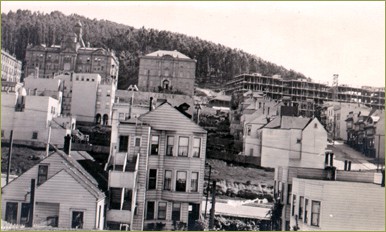
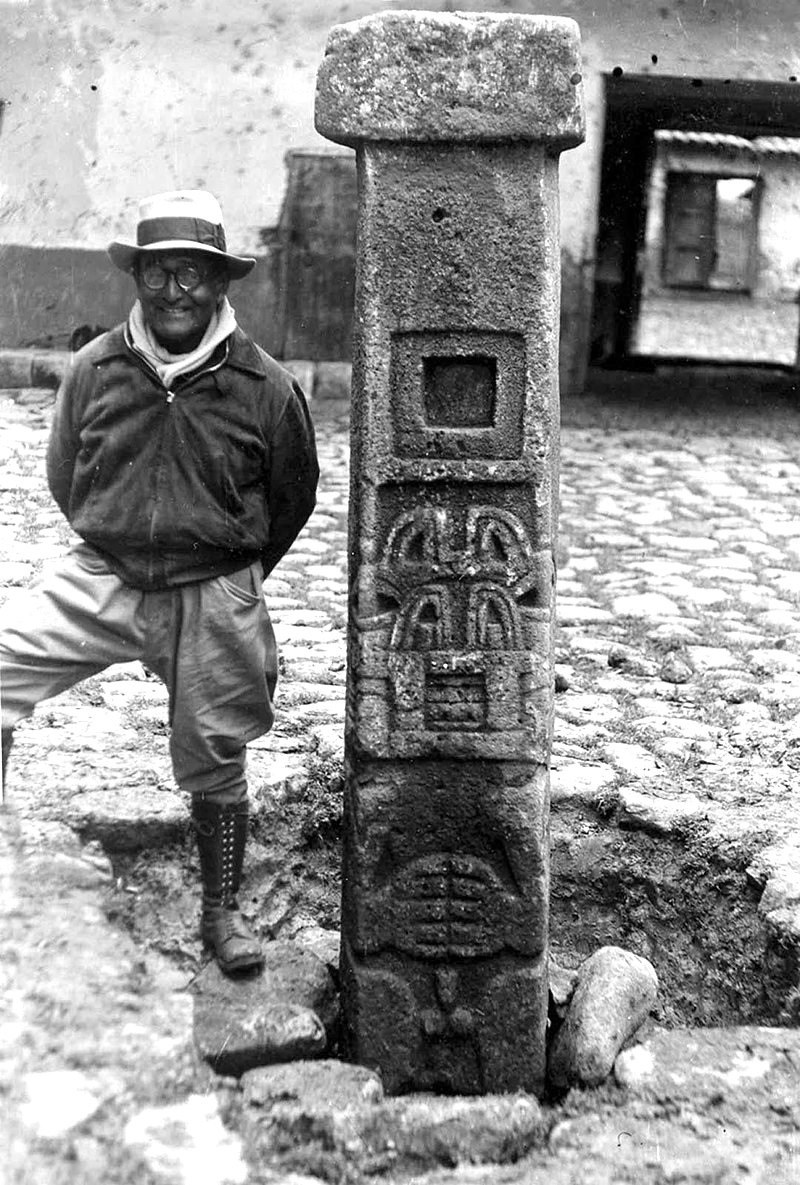
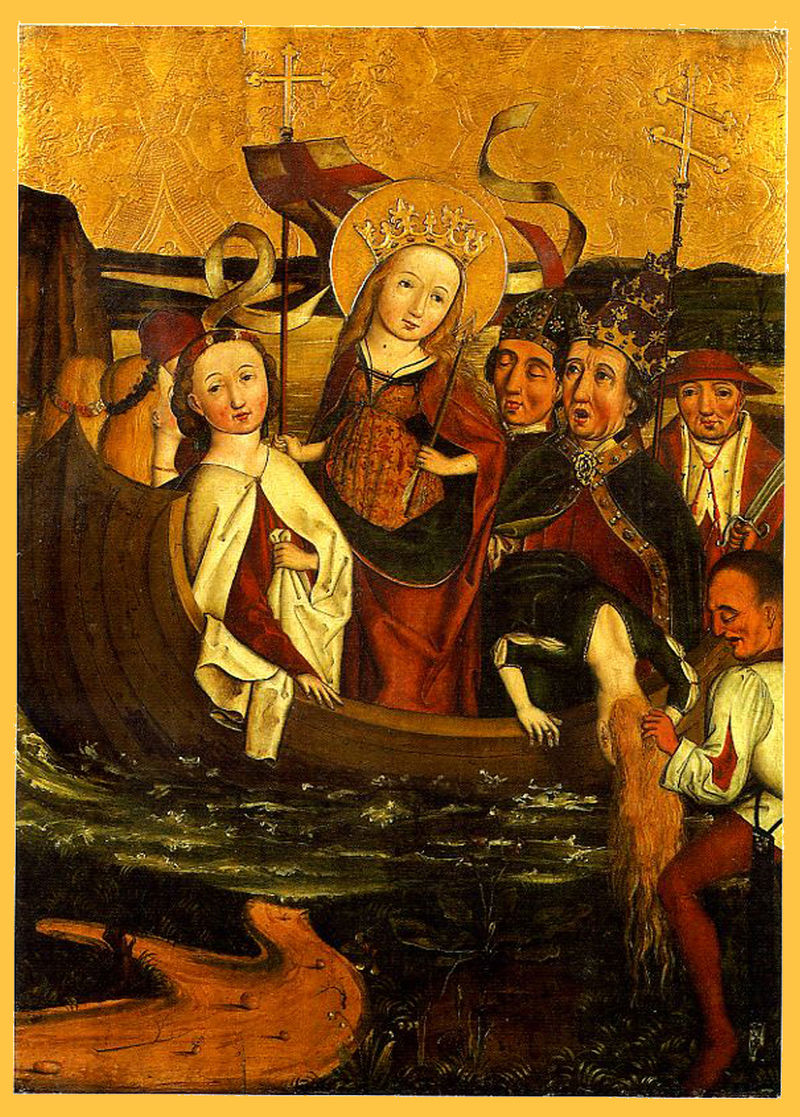
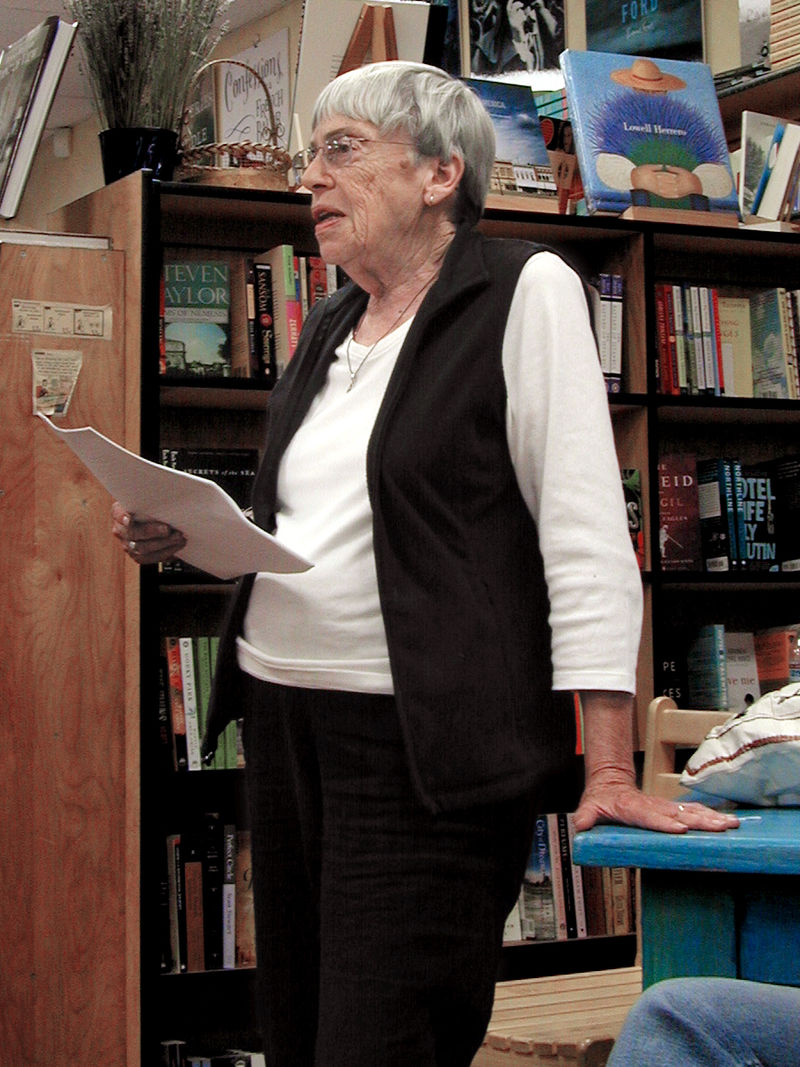
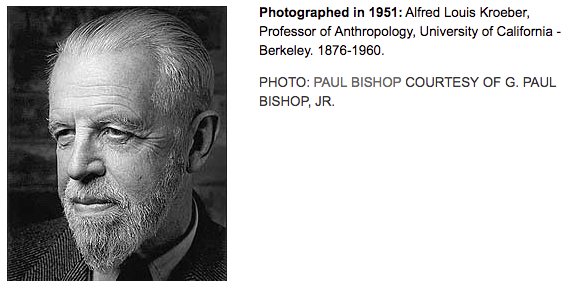
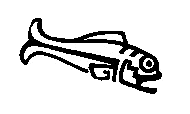 Copyleft,
CC, Mitzub'ixi Quq Chi'j, 1996-2099
Copyleft,
CC, Mitzub'ixi Quq Chi'j, 1996-2099